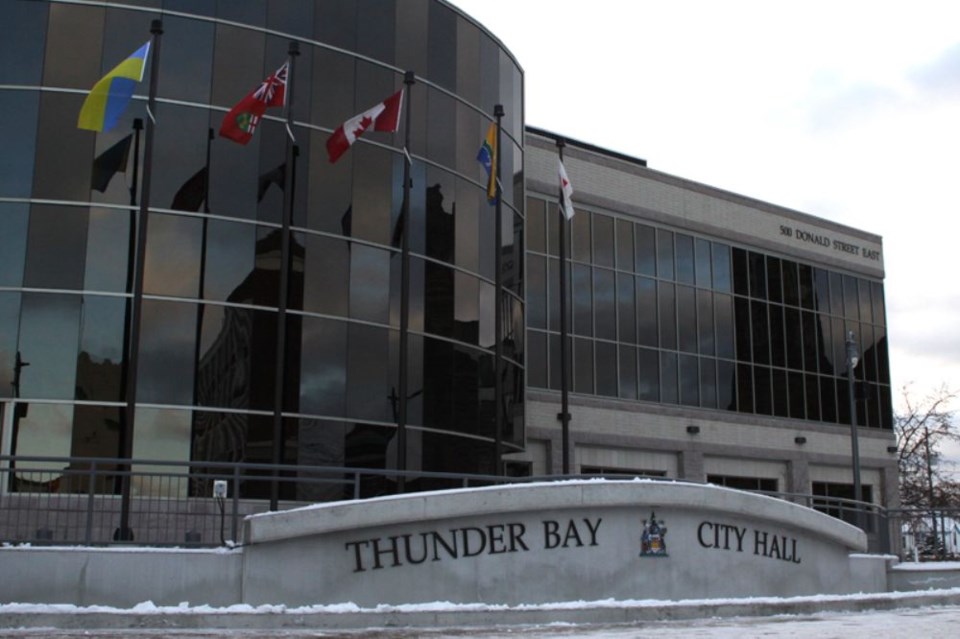THUNDER BAY – There were few fireworks as Thunder Bay’s city council assembled virtually Monday for the first of four meetings to review the 2022 municipal budget.
Councillors approved changes that will trim the tax levy by a hair, while expanding infrastructure spending and staffing in several departments, thanks largely to new provincial funding.
Monday's meeting began with sobering news on the anemic growth of the city's tax base in 2021, as financial services director Emma Westover shared final Municipal Property Assessment Corporation (MPAC) numbers.
At $117,000 or just 0.06 per cent, last year's assessment growth proved to be less than half of the city's already dismal projection of $300,000.
The shortfall was explained by a majority of growth being exempt from assessment, and the commercial assessment class shrinking "due to very little construction activity and the settlement of a number of appeals," Westover said.
The city saw $69.5 million in tax-exempt growth last year, staff said, mostly in education and health care.
It's by far the lowest rate of growth over the past decade, comparing to a ten-year average of 0.74 per cent, and leaves council with almost no cushion to ease the impact of this year's tax increase.
The news was more than made up for in the budget by a nearly half-million dollar drop in insurance premium costs, also announced Monday, but that's likely to be of little comfort to city councillors who have expressed unease over the trend of slowing growth.
There was little disagreement and no dramatic changes proposed by councillors as they reviewed large sections of the draft budget prepared by administration Monday.
On the agenda were two of the city's four main departments: Infrastructure and Operations, including roads, parks, and engineering; and Corporate Services and Long-Term Care, including the general manager's office, IT department, and the Pioneer Ridge and Jasper Place facilities.
More debate is likely next week, as council considers a police request for a $56 million new headquarters, with several councillors indicating they remain hesitant.
The tax levy increase stood at 2.27 per cent after growth by the end of Monday’s meeting, just below the 2.29 per cent hike in the initial proposed budget.
That's above where council had looked to hold the line, at 2.25 per cent. On the other hand, it's barely above the city's ten-year average, despite nearly non-existent growth, and drew measured praise from the local chamber of commerce for coming in below inflation.
The levy represents the total amount collected in municipal taxes, so the increase won't exactly match the change individual taxpayers see on their bills, which is influenced by other factors including MPAC assessments and the education tax rate.
Infrastructure projects approved in sections of the budget reviewed Monday include a new accessible playground at Boulevard Lake, rehabilitating the parking lot and adding pathways at Hillcrest Park, the rehabilitation of Balmoral Street from Alloy to Lithium, replacement of the Woodcrest Bridge, new wayfinding signage at Centennial Park, and new pedestrian crossovers.
Councillors also approved over $2.5 million for work on the city's vision for a waterfront trail, payed for with extra funding from a one-time doubling of the federal gas tax, now known as the Federal Canada Community Building Fund. That will cover extending the trail south from Prince Arthur's Landing to the proposed new site of the Thunder Bay Art Gallery, and other improvements to the nearby Pool 6 site.
Staff expansions were approved in the city's long-term care, engineering, and information technology departments, with councillors accepting rationale from administration that the additions were largely covered by provincial funds and would deliver major benefits.
The city's Pioneer Ridge long-term care home will expand its workforce in 2022 entirely using provincial dollars, as the Ford government moves to implement its commitment to deliver a standard of four hours of direct care per resident each day.
The home will add six new personal support workers, convert eight part-time PSWs to full-time, hire four part-time resident care aides, another Infection Prevention and Control (IPAC) Coordinator, and a therapeutic recreationist.
City-run homes currently provide an average of 2.8 hours of direct care. With the staffing increase, that will ramp up to 3.2 hours this year, and reach the four-hour target by 2025, said administrator Lee Mesic.
The cost to add four new positions in the engineering department will be more than offset by up to $23 million in expanded Ontario Community Infrastructure Fund (OCIF) dollars for Thunder Bay, over five years, councillors heard, intended to help municipalities address crumbling infrastructure.
The new staff are required for the city to take advantage of a glut of incoming infrastructure funding that also includes the one-time doubling of the Federal Canada Community Building Fund, the Investing in Canada Infrastructure Program (ICIP), and what was described as successful applications to programs like FedNor and NOHFC, administration said.
The IT expansions involve two new positions in 2022 to help the city achieve goals in its new digital plan.
Councillors are able to propose budget changes until the document is ratified on Feb. 7.
Learn more about how to watch budget meetings and submit feedback.



.png;w=120;h=80;mode=crop)

